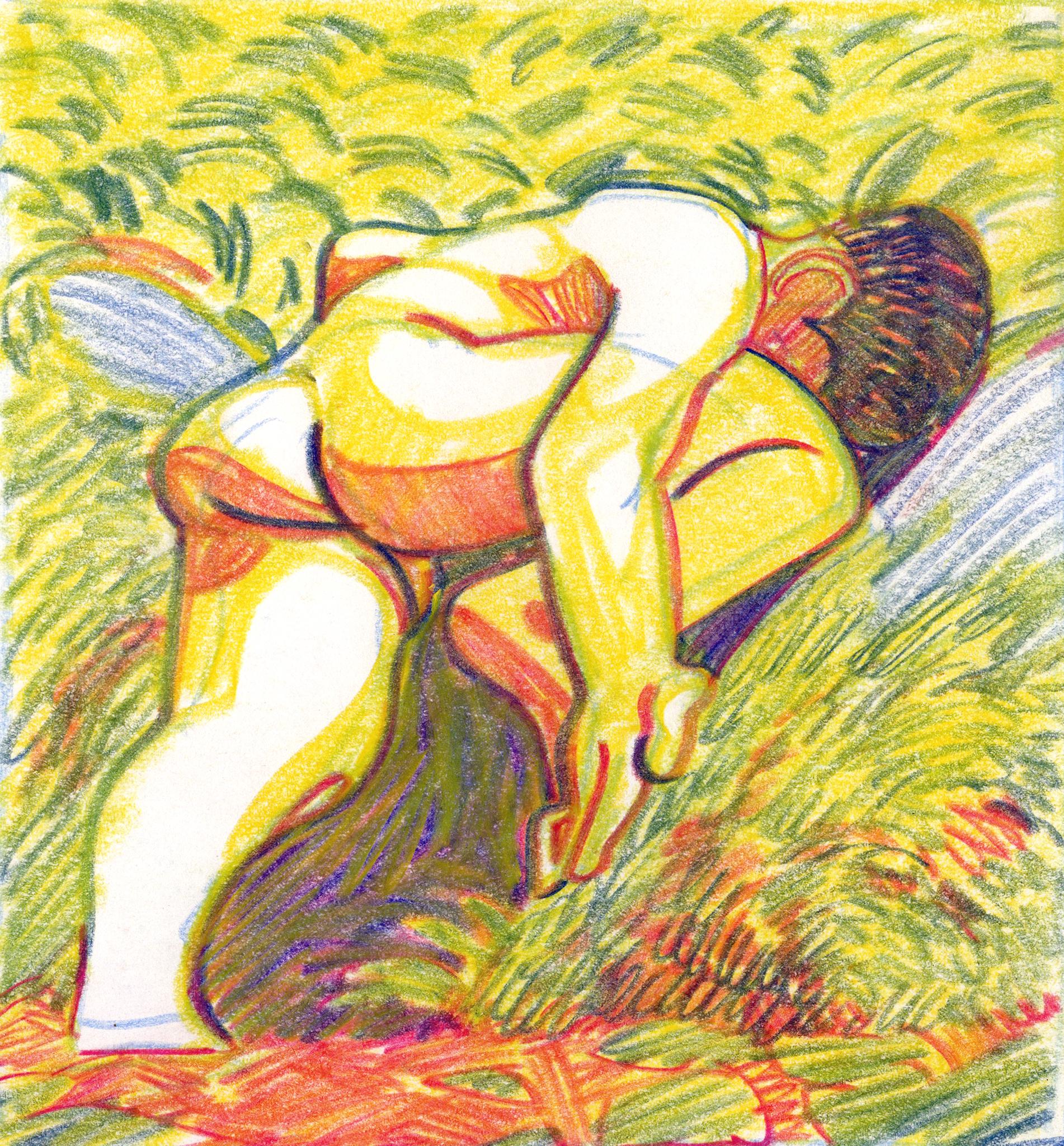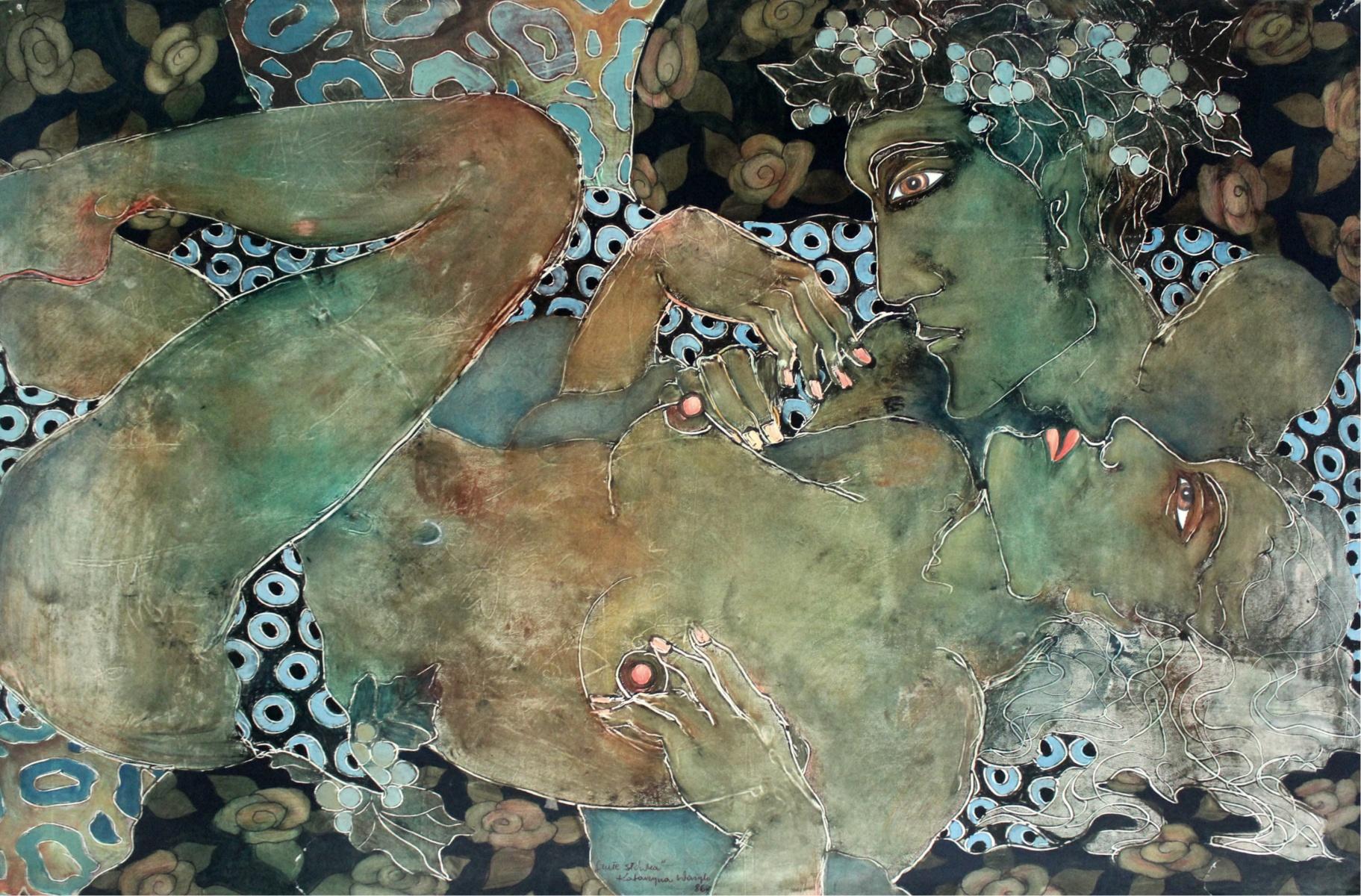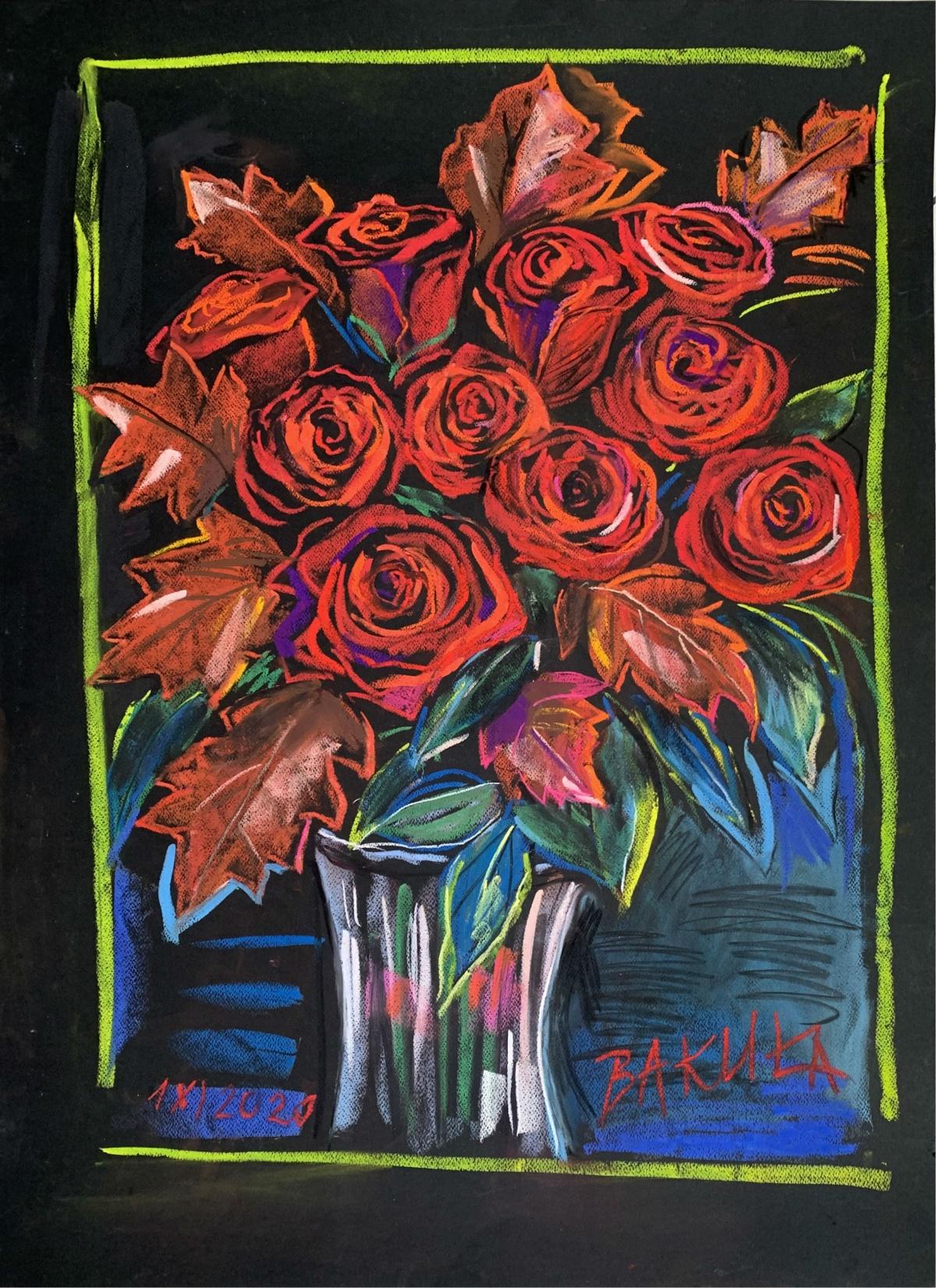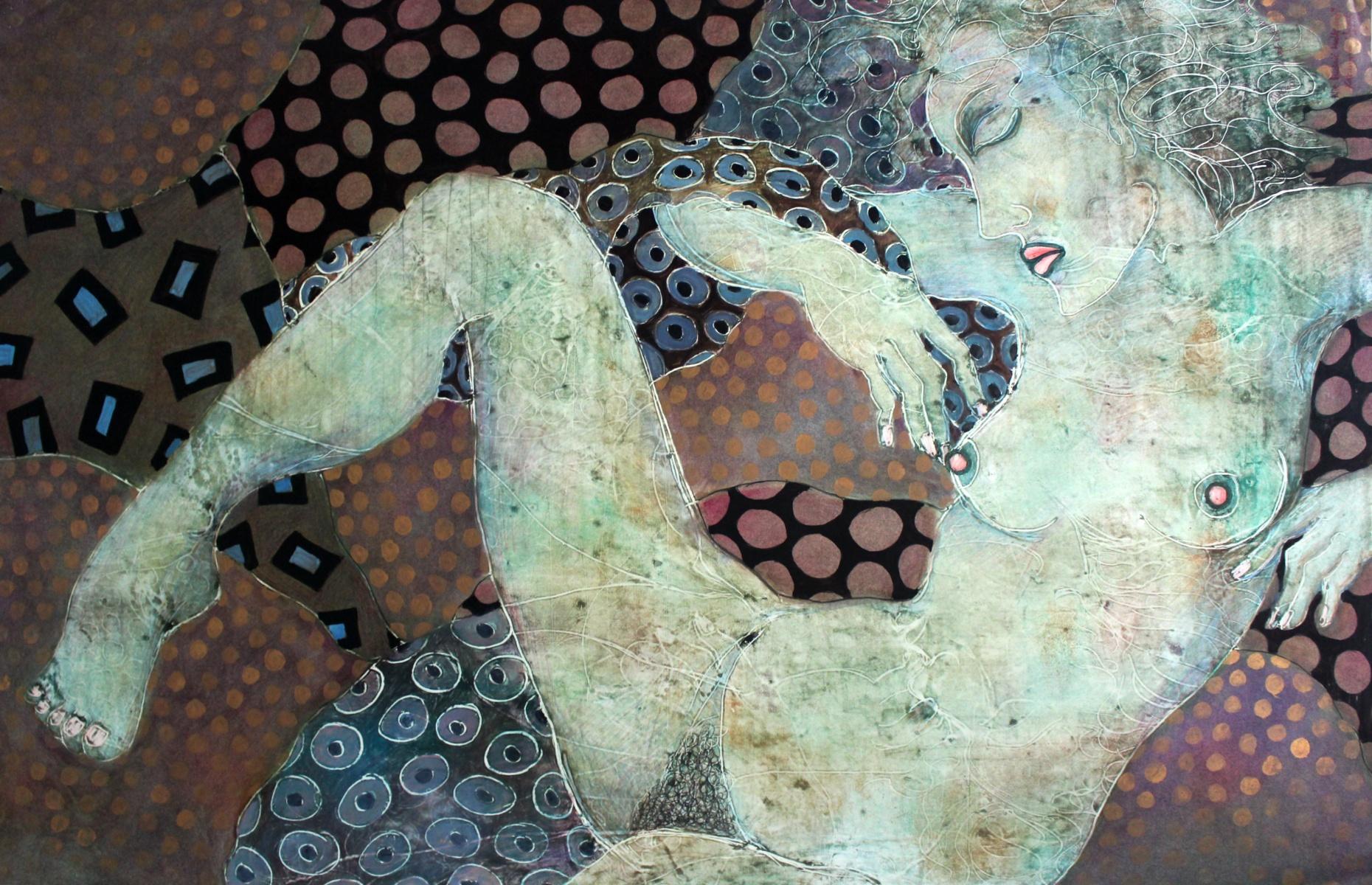Items Similar to Woman in Prayer Pose
Want more images or videos?
Request additional images or videos from the seller
1 of 6
William AnthonyWoman in Prayer Pose1992
1992
About the Item
William Anthony
Born 1934, Forth Monmouth, NJ. and grew up in Washington State.
Education
1958 Yale, New Haven, CT, B.A European History
1959-60 San Francisco Art Institute, CA
1961 Art Students League, NY
American painter and draftsman William Anthony was born 1934 in Fort Monmouth, New Jersey. While majoring in history at Yale University, Anthony attended a few art courses, one of which was taught by Josef Albers. He also attended the Art Students' League in 1958 and 1961. After graduating from Yale, he joined his family in California, where he attended the San Francisco Art Institute. In 1962, Anthony taught figure drawing at a commercial art school in San Francisco, where he developed a method of drawing that resulted in his book A New Approach to Figure Drawing. Two years later he moved to New York City.
From 1977 to 1978, Anthony made a series of drawings for Andy Warhol's magazine Interview, and published another book Bible Stories. In 1983, he married Norma Neuman, and continued to produce and exhibit his art work, including solo exhibitions in New York, California, and Europe. In 1988, the Jargon Society published an additional book, Bill Anthony's Greatest Hits. In 2000 another book, War Is Swell, was published by Smart Art Press. Since then he has had five one-man exhibitions with Stalke Gallery, Denmark. In 2013 Stalke published a book of Anthony's work, Ironic Icons, by Sam Jedig.
- Creator:
- Creation Year:1992
- Dimensions:Height: 19 in (48.26 cm)Width: 17 in (43.18 cm)
- Medium:
- Movement & Style:
- Period:
- Condition:Measurements include frame.
- Gallery Location:Surfside, FL
- Reference Number:
About the Seller
4.9
Platinum Seller
These expertly vetted sellers are 1stDibs' most experienced sellers and are rated highest by our customers.
Established in 1995
1stDibs seller since 2014
1,550 sales on 1stDibs
Typical response time: 1 hour
- ShippingRetrieving quote...Ships From: Surfside, FL
- Return PolicyA return for this item may be initiated within 3 days of delivery.
More From This SellerView All
- William Anthony 1992 Caricature Drawing Will You Marry Me?By William AnthonyLocated in Surfside, FLWilliam Anthony, born 1934, Forth Monmouth, NJ. and grew up in Washington State. Education 1958 Yale, New Haven, CT, B.A European History 1959-60 San Francisco Art Institute, CA 196...Category
1990s Contemporary Figurative Drawings and Watercolors
MaterialsPaper, Pastel, Pencil
- The ConnoisseurBy William AnthonyLocated in Surfside, FLWilliam Anthony Born 1934, Forth Monmouth, NJ. and grew up in Washington State. Education 1958 Yale, New Haven, CT, B.A European History 1959-60 San Francisco Art Institute, CA 1961...Category
Late 20th Century Contemporary Figurative Drawings and Watercolors
MaterialsPaper, Pastel, Pencil
- Men Working on Kibbutz Palestine, Israeli Judaica Pastel DrawingBy Eliyahu SigardLocated in Surfside, FLFrom The British mandate Pre State of Israel Palestine Period. Eliahu Sigad (Eliyahu Sigard), painter, born 1901, Lithuania. Founder of Israeli Painters' Association. Educated in Eur...Category
1940s Fauvist Figurative Drawings and Watercolors
MaterialsPaper, Oil Crayon, Pastel
- Expressionist Color Drawing Cobalt Glass Vintage Frame Modernist Ben Zion WPABy Ben-Zion WeinmanLocated in Surfside, FLExpressionist ink and pastel crayon drawing of flowers in vase. Framed in a vintage cobalt blue glass original frame Hand signed and dated Framed it measures 13.5 X 10.5 The actual paper is 7.5 X 5.5 Born in 1897, Ben-Zion Weinman celebrated his European Jewish heritage in his visual works as a sculptor, painter, and printmaker. Influenced by Spinoza, Knut Hamsun, and Wladyslaw Reymont, as well as Hebrew literature, Ben-Zion wrote poetry and essays that, like his visual work, attempt to reveal the deep “connection between man and the divine, and between man and earth.” An emigrant from the Ukraine, he came to the US in 1920. He wrote fairy tales and poems in Hebrew under the name Benzion Weinman, but when he began painting he dropped his last name and hyphenated his first, saying an artist needed only one name. Ben-Zion was a founding member of “The Ten: An Independent Group” The Ten” a 1930’s avant-garde group, Painted on anything handy. Ben-Zion often used cabinet doors (panels) in his work. Other members of group included Ilya Bolotowsky, Lee Gatch, Adolph Gottlieb, Louis Harris, Yankel Kufeld, Marcus Rothkowitz (later known as Mark Rothko), Louis Schanker, and Joseph Solman. The Art of “The Ten” was generally described as expressionist, as this style offered the best link between modernism and social art. Their exhibition at the Mercury Gallery in New York held at the same time as the Whitney Annual Exhibition of Contemporary American Painting, included a manifesto concentrating on aesthetic questions and criticisms of the conservative definition of modern art imposed by the Whitney. Ben-Zion’s work was quickly noticed. The New York Sun said he painted “furiously” and called him “the farthest along of the lot.” And the triptych, “The Glory of War,” was described by Art News as “resounding.” By 1939, The Ten disbanded because most of the members found individual galleries to represent their work. Ben-Zion had his first one-man show at the Artist’s Gallery in Greenwich Village and J.B. Neumann, the highly esteemed European art dealer who introduced Paul Klee, (among others) to America, purchased several of Ben-Zion’s drawings. Curt Valentin, another well-known dealer, exhibited groups of his drawings and undertook the printing of four portfolios of etchings, each composed of Ben-Zion’s biblical themes. He worked as a WPA artist. Ben-Zion’s work is represented in many museums throughout the country including the Metropolitan, the Whitney, and the Museum of Modern Art in New York, the Art Institute of Chicago, the Philadelphia Museum of Art and the Phillips Collection, Washington. The Jewish Museum in New York opened in 1948 with a Ben-Zion exhibition. Ben-Zion consistently threaded certain subject matter—nature, still life, the human figure, the Hebrew Bible, and the Jewish people—into his work throughout his life. "In all his work a profound human feeling remains. Sea and sky, even sheaves of wheat acquire a monolithic beauty and simplicity which delineates the transient as a reflection of the eternal. This sensitive inter- mingling of the physical and metaphysical is one of the most enduring features of Ben-Zion's works." (Excerpt from Stephen Kayser, “Biblical Paintings,” The Jewish Museum Catalogue, 1952). Mystical Imprints: Marc Chagall, Ben-Zion, and Ben Shahn presents the print work of three prominent 20th century Jewish artists born in the Russian Empire. Among these seventy pieces are etchings and lithographs from Chagall’s Bible series...Category
1950s Expressionist Still-life Drawings and Watercolors
MaterialsPaper, Oil Crayon, Pastel, Ink
- Expressionist Ink, Pastel, Crayon Drawing Jewish American Modernist Ben Zion WPABy Ben-Zion WeinmanLocated in Surfside, FLExpressionist ink and pastel crayon drawing of beans (carobs, flowers?) in pods Hand signed. Born in 1897, Ben-Zion Weinman celebrated his European Jewish heritage in his visual works as a sculptor, painter, and printmaker. Influenced by Spinoza, Knut Hamsun, and Wladyslaw Reymont, as well as Hebrew literature, Ben-Zion wrote poetry and essays that, like his visual work, attempt to reveal the deep “connection between man and the divine, and between man and earth.” An emigrant from the Ukraine, he came to the US in 1920. He wrote fairy tales and poems in Hebrew under the name Benzion Weinman, but when he began painting he dropped his last name and hyphenated his first, saying an artist needed only one name. Ben-Zion was a founding member of “The Ten: An Independent Group” The Ten” a 1930’s avant-garde group, Painted on anything handy. Ben-Zion often used cabinet doors (panels) in his work. Other members of group included Ilya Bolotowsky, Lee Gatch, Adolph Gottlieb, Louis Harris, Yankel Kufeld, Marcus Rothkowitz (later known as Mark Rothko), Louis Schanker, and Joseph Solman. The Art of “The Ten” was generally described as expressionist, as this style offered the best link between modernism and social art. Their exhibition at the Mercury Gallery in New York held at the same time as the Whitney Annual Exhibition of Contemporary American Painting, included a manifesto concentrating on aesthetic questions and criticisms of the conservative definition of modern art imposed by the Whitney. Ben-Zion’s work was quickly noticed. The New York Sun said he painted “furiously” and called him “the farthest along of the lot.” And the triptych, “The Glory of War,” was described by Art News as “resounding.” By 1939, The Ten disbanded because most of the members found individual galleries to represent their work. Ben-Zion had his first one-man show at the Artist’s Gallery in Greenwich Village and J.B. Neumann, the highly esteemed European art dealer who introduced Paul Klee, (among others) to America, purchased several of Ben-Zion’s drawings. Curt Valentin, another well-known dealer, exhibited groups of his drawings and undertook the printing of four portfolios of etchings, each composed of Ben-Zion’s biblical themes. He worked as a WPA artist. Ben-Zion’s work is represented in many museums throughout the country including the Metropolitan, the Whitney, and the Museum of Modern Art in New York, the Art Institute of Chicago, the Philadelphia Museum of Art and the Phillips Collection, Washington. The Jewish Museum in New York opened in 1948 with a Ben-Zion exhibition. Ben-Zion consistently threaded certain subject matter—nature, still life, the human figure, the Hebrew Bible, and the Jewish people—into his work throughout his life. "In all his work a profound human feeling remains. Sea and sky, even sheaves of wheat acquire a monolithic beauty and simplicity which delineates the transient as a reflection of the eternal. This sensitive inter- mingling of the physical and metaphysical is one of the most enduring features of Ben-Zion's works." (Excerpt from Stephen Kayser, “Biblical Paintings,” The Jewish Museum Catalogue, 1952). Mystical Imprints: Marc Chagall, Ben-Zion, and Ben Shahn presents the print work of three prominent 20th century Jewish artists born in the Russian Empire. Among these seventy pieces are etchings and lithographs from Chagall’s Bible series...Category
Mid-20th Century Expressionist Still-life Drawings and Watercolors
MaterialsPaper, Oil Crayon, Pastel, Ink
- Pastel on paper Shtetl SceneBy Anatoli Lvovich KaplanLocated in Surfside, FLPastel or Tempera on paper. Judaica Shtetl scene of village. Anatoli Lwowitch Kaplan was a Russian painter, sculptor and printmaker, whose works often reflect his Jewish origins. h...Category
20th Century Modern Figurative Drawings and Watercolors
MaterialsPastel
You May Also Like
- Canadian Contemporary Art by Christian Frederiksen - Figure in Nature, PrimariesLocated in Paris, IDFChalk pastel on paper Christian Frederiksen is a Georgian artist born in 1989 who lives and works in Calgary, Canada. He loves to experiment with new ways of creating imagery by col...Category
2010s Contemporary Figurative Drawings and Watercolors
MaterialsPaper, Chalk, Pastel
- Canadian Contemporary Art by Christian Frederiksen - Figure Coalescing NatureLocated in Paris, IDFChalk pastel on paper Christian Frederiksen is a Georgian artist born in 1989 who lives and works in Calgary, Canada. He loves to experiment with new ways of creating imagery by col...Category
2010s Contemporary Figurative Drawings and Watercolors
MaterialsPastel, Chalk, Paper
- Tender words - XX Century, Mixed Media Figurative Painting, Nude, CoupleBy Katarzyna WazykLocated in Warsaw, PLGabryela Wasowicz is a Polish painter born in 1947. She studied at the Academy of Fine Arts of Warsaw and then at the Gerrit Rietveld Akademie in Amsterdam. Once she graduated in 197...Category
1980s Contemporary Nude Drawings and Watercolors
MaterialsPaper, Pastel, Watercolor, Gouache
- Meeting - XXI Century, Contemporary Figurative Pastel DrawingBy Magdalena Rytel-SkorekLocated in Warsaw, PLMagdalena Rytel-Skorek (born in 1976) She studied at the Faculty of Graphic Design at the European Academy of Arts in Arts in Warsaw. She graduated in 2001 from the studio of prof. J...Category
Early 2000s Contemporary Animal Drawings and Watercolors
MaterialsPaper, Pastel
- Antivirus flowers - Figurative Pastel Drawing, Colorgul, Vibrant, Still lifeBy Hanna BakułaLocated in Warsaw, PLHANNA BAKUŁA (born in 1950) Polish painter, stage designer and writer. Bakuła graduated with honors from the Academy of Fine Arts in Warsaw, where she studied under such polish masters as J. Tarasin, E. Eibisch, A. Kobzdej. In 1981 she moved to New York and settled down on Manhattan. She painted, designed scenography and costumes for the avant-garde theatre "The Kitchen". These designs were praised by "The New York Times" as the best of the Off Broadway projects and won the first prize. She received a scholarship from the Guggenheim Foundation. In 1989 she came back to Poland. Since 1996 years Bakuła has organized Franz Schubert...Category
1980s Contemporary Figurative Drawings and Watercolors
MaterialsPaper, Pastel
- Death praying for lifeLocated in Santa Monica, CAPastel on paper. Artwork is 25.5 x 19.7 in., framed it is 31 x 25 in.Category
2010s Contemporary Drawings and Watercolor Paintings
MaterialsPaper, Pastel





